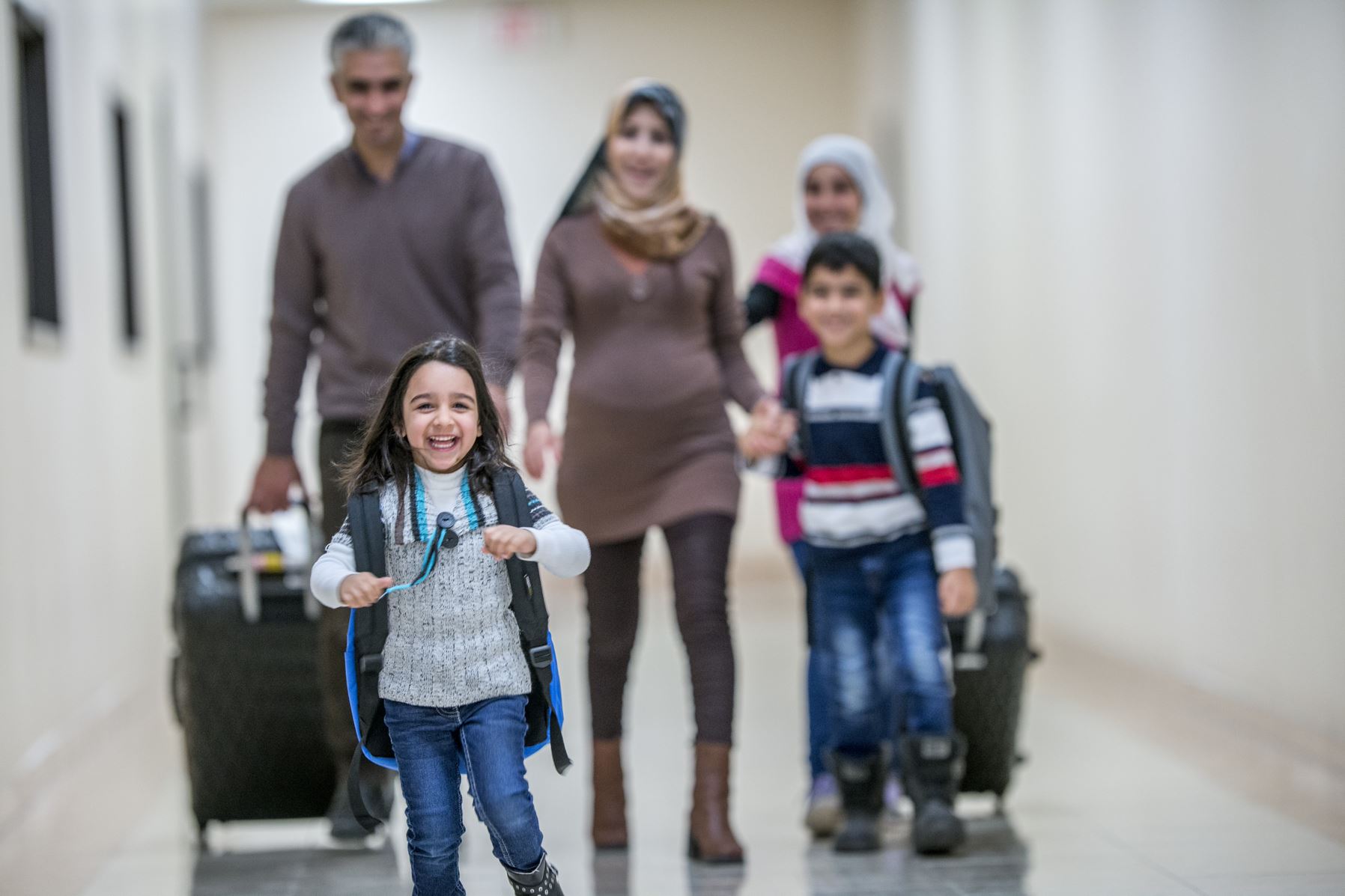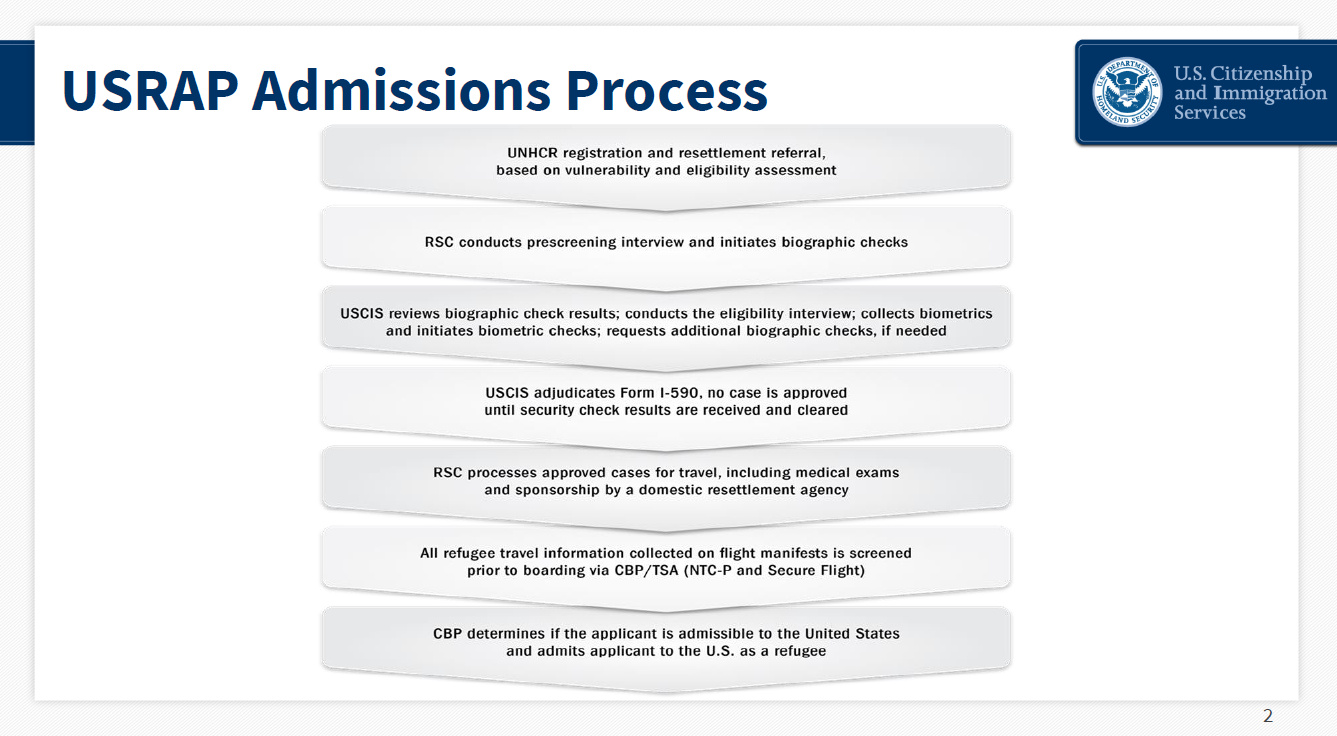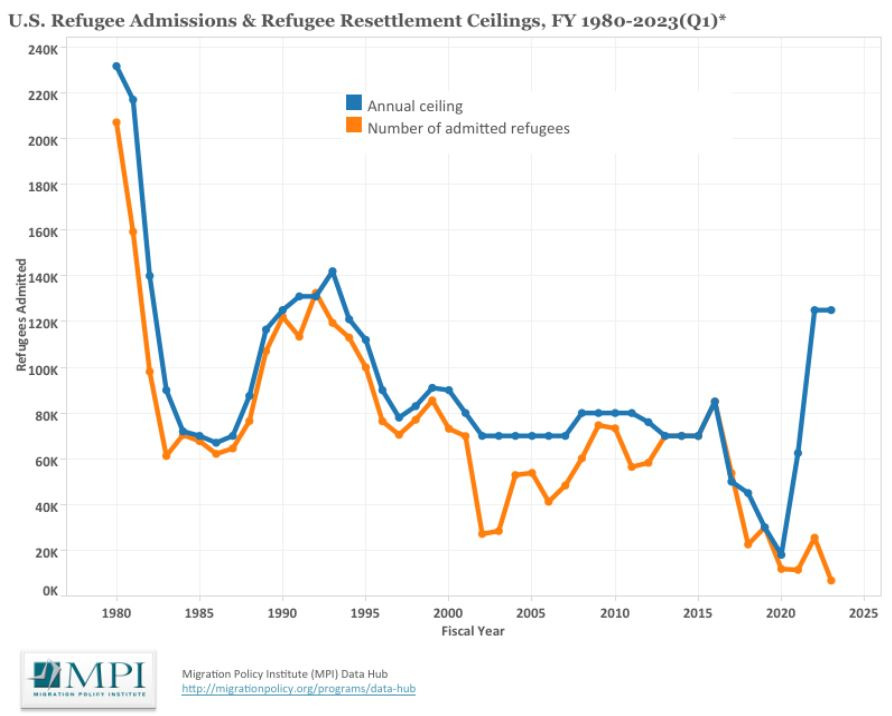The browser you are using is not supported. Please consider using a modern browser.
Advocating for Resettlement
Understanding our call to welcome

Global Refuge is committed to welcoming refugees into communities across the United States.
Our Long Welcome starts with an ambitious Presidential Determination (PD) on refugee admissions, is facilitated by strong Congressional support and funding for refugee resettlement programming, and is shaped by support at the state, local, and community levels.
The Global Refuge Refugee Resettlement Information Page offers resources on the U.S. Resettlement Program, updates on refugee-related policy and legislation, and upcoming Global Refuge events and initiatives.
What Can I Do to Support Refugees?
- Advocate: Sign our action alert! Let your elected officials know you support policies that welcome and support refugees.
- Learn More and Share with Your Community: Read below our Frequently Asked Questions about Refugee Resettlement and Learn more about the Long Welcome.
- Join our Ambassador Program, a national community of passionate advocates, volunteers, and leaders. With active support and training from Global Refuge staff, Ambassadors act in their communities, from organizing awareness campaigns and advocacy actions to hosting prayer vigils or gathering supplies to aid local crisis response.
- Pray: The power of prayer, whether individually or with others, including community members, elected officials and impacted people, is undeniable in bridging divides and reminding us of our common humanity. Take a look at these prayer resources and contemplate using them and sharing with others.
Refugee Resettlement FAQ
-
The United Nations High Commissioner for Refugees (UNHCR) estimates there are more than 120 million forcibly displaced across the globe. While a majority of people are internally displaced, 43.4 million are refugees and individuals who have been forced to flee their countries and seek refuge elsewhere. This is similar to the population of Japan, the 12th most-populated country in the world.
-
73 percent of all refugees are from five countries: Syria, Venezuela, Ukraine, Afghanistan, and South Sudan. 69 percent of refugees are hosted by their neighboring countries. Countries hosting the largest number of refugees are Türkiye, Colombia, Germany, Pakistan, and Uganda.
Twenty two percent of refugees, roughly 6.6 million, live in refugee camps. On average, refugees who remain in camps are 36 percent more likely to live below the national extreme poverty line, although finding safe housing and employment outside the camp is very challenging.
-
Millions of refugees around the globe face persecution due to race, ethnicity, religion, nationality, gender, and political and social group affiliations. International displacement is driven by a confluence of factors, including inter- and intra- state conflict, political instability, and, increasingly, climate disasters.
Often, there is overlap between some of these factors. However, to qualify for refugee status according to the 1951 Refugee Convention and its 1967 Protocol, a refugee is an individual who “is unable or unwilling to return to their country of origin owing to a well-founded fear of being persecuted for reasons of race, religion, nationality, membership of a particular social group, or political opinion.”
This refugee status definition is foundational to the definitions of refugees codified into national laws across the globe, including the U.S. Parties to the 1951 Convention and its 1967 Protocol. Nations who signed these international laws are also subject to the principle of non-refoulement, meaning they cannot return persons to their home countries if their lives are threatened or persecuted for the reasons mentioned in the refugee status definition. While many refugees are fleeing countries due to climate change impacts, their refugee status is determined by other factors impacting their displacement since there are no international protections for people displaced by climate disasters. Read LIRS’ July 2021 Climate Report to learn more.
-
The Bureau of Population, Refugees, and Migration (PRM) at the U.S. Department of State manages the U.S. Refugee Admissions Program (USRAP) in coordination with other bureaus at the Department of State and with the U.S. Citizenship and Immigration Services (USCIS).
When individuals flee their countries due to fear of persecution due to race, religion, nationality, political opinion, or membership of a social group, they can qualify as refugees under the 1951 Refugee Convention and its 1967 Protocol.
Refugees are brought to the U.S. through different priority categories, which are explained below:
Priority 1: Cases that are identified and referred to the program by the United Nations High Commissioner for Refugees (UNHCR), a United States Embassy, or a designated non-governmental organization (NGO).
Priority 2: Groups of special humanitarian concern identified by the U.S. refugee program.
Priority 3: Family reunification cases (spouses, unmarried children under 21, and parents of persons lawfully admitted to the United States as refugees or asylees or permanent residents (green card holders) or U.S. citizens who previously had refugee or asylum status). For information on the current nationalities eligible for Priority 3 processing, see the U.S. Department of State page.
Priority 4: In January 2023, the Department of State and Department of Health and Human Services (HHS), launched a private sponsorship program, Welcome Corps, to increase community participation in the U.S. resettlement process. Refugees who arrive through this program have a Priority 4 designation.
-
Rooted in faith, Global Refuge believes that we are called to welcome those fleeing persecution and seeking refuge in the United States. Resettlement is a life-saving program for the most vulnerable and a practice in devotion for many in receiving communities. Across the U.S., faith communities remain ready and eager to welcome refugees.
At Global Refuge, we welcome refugees because we believe that every person has God-given dignity. We take seriously what the Bible says about welcoming strangers (Matthew 25: 31-40) and we see God-given dignity in every person that we serve. We look to the social teachings of the Lutheran Church and the experience of immigrants in the U.S. to inform our welcome to newcomers.
Global Refuge works to welcome refugees into communities that best suit the needs of the refugees. Global Refuge and network partners operate 50 resettlement and placement sites and one remote placement site across the United States – making it the 2nd largest resettlement agency in the United States. The Global Refuge network receives government funding that supports our work of welcome through robust case management services for newcomers as they work to integrate into their new communities.
-
Yes. All refugees must undergo a series of screenings, USCIS interviews, security vetting, and medical checks prior to their arrival in the U.S.
After the screening and vetting process has concluded, refugees are then connected with one of the ten resettlement agencies across the United States that welcome the refugees into communities, help them secure housing, find employment, support language learning services, and support their overall integration into their new communities.

-
In 1980, the U.S. Refugee Admissions Program (USRAP) was established by Congress through The Refugee Act. The Refugee Act amended other immigration laws and created an annual admission limit of 50,000, which could be increased if the President and Congress deemed the global humanitarian situation warranted the resettlement of more refugees in the United States.
The Refugee Act requires that the President annually consults with Congress to assess the scope of global humanitarian disaster, sets a U.S. admissions goal based on global needs and congressional funding, and provides a pipeline for internationally displaced populations to lawfully enter the U.S. after extensive security screening and vetting processes. After this assessment and consultation process, the President sets an annual determination, or goal, on refugee admissions for that particular year. The annual determination is often called the “PD.”
-
The U.S. resettles the most vulnerable of refugees and also looks to reunify families. Additionally, the PD includes regional allocations that designate ranges on the number of refugees from a particular region in the world can be resettled. This allocation changes annually based on areas of humanitarian need.
The regional allocations for FY24 are:
Africa: 30,000-50,000
East Asia: 10,000-20,000
Europe and Central Asia: 2,000-3,000
Latin America/Caribbean: 35,000-50,000
Near East/South Asia: 30,000-45,000
-
The actual number of refugees welcomed to the United States has varied based upon a variety of factors, including the respective administration’s prioritization of the refugee program, the annual Presidential Determination, and Congressional appropriations. See the Migration Policy Institute’s graph below comparing the PD on resettlement admissions to the number of refugees admitted to the U.S. between 1980 and 2024.

-
In recent years, there have been extensive cutbacks to the USRAP, followed by extensive rebuilding.
2020: In October 2020, the Trump Administration limited refugee admissions to 15,000 in fiscal year 2021, with the lowest PD since the establishment of the refugee admissions program in 1980.
2021: In 2021, only 11,411 refugees were welcomed to the U.S. This is the lowest refugee admissions since the passage of the Refugee Act in 1980. This unsettling outcome, which had grave human consequences, underscores the importance of an ambitious PD on refugee admissions.
2022: The Biden Administration set a PD of 125,000. The Biden Administration only resettled 25,465 refugees in fiscal year 2022 due to the previous destruction of USRAP.
2023: President Biden set the PD at 125,000 refugees. During this year, significant strides in building capacity and streamlining refugee processing were made and 60,014 refugees were ultimately admitted.
2024: President Biden again set the PD for the admission of up to 125,000 refugees. Currently, the administration is on track to settle over 100,000 refugees.
Resettlement Impact
- 24,431 arrivals from Africa
- 21,178 arrivals from Near East/South Asia
- 13,822 arrivals from Latin America and the Caribbean
Raise your voice for refugees.
Contact CongressWe must continue to prioritize refugee resettlement and ensure refugees can continue to be welcomed and integrated into our communities. Contact Congress to signal your support for refugee resettlement.
New American Stories
Hear the stories of former refugees in their own words. Share on your social networks to bring more attention and support to the refugee journey in the United States.

You can change lives.
Explore the many ways to support Global Refuge.
Get InvolvedExplore the many ways to support Global Refuge.
Get Involved

